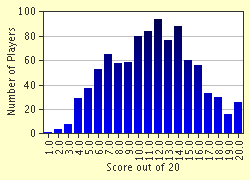Quiz Answer Key and Fun Facts
1. Which US fighter had its engine located in the middle of the fuselage, creating instability and a tendency for the plane to spin into the ground?
2. Which aerodynamically unstable little fighter was the first fighter plane to be used almost exclusively during the late 1930s and early 1940s by US Navy and Marine pilots in the Pacific Theater?
3. What fighter was the choice of Gen. Claire Chennault's AVG in China before the US and Japan went to war?
4. What was the first American fighter plane to fly from British bases in the European Theater of operations against the Germans?
5. Initially, the P-51 suffered from being under-powered at high altitudes. What brand of engine was originally installed in the P-51?
6. What was the P-51's "Achilles heel" in combat?
7. Which plane, flown initially by Marine pilots, was the first plane that could match the Japanese Zero in ALMOST every regard, but was more heavily armed and armored?
8. Which was the heaviest US bomber to fly in the European Theater?
9. What was the first pressurized US heavy bomber used in WWII?
10. The P-61 Black Widow was built by what American aircraft manufacturer?
11. What popular US fighter was called "The Jug" by those fighter jocks who flew and knew her best?
12. Why was the Mustang the escort fighter of choice in the ETO?
13. Which US Navy fighter was the first to match, or exceed, the Japanese Zero-sen in every performance category?
14. What German fighter was the only airplane that could keep pace with the Mustang in most facets of performance?
15. In what campaign did Marine Corsairs first use napalm canisters against entrenched Japanese troops?
16. What was the name of the B-17 that was the subject of intense press coverage as her 25th mission approached?
17. What prevented the high flying B-29s from hitting their industrial targets in Japanese cities?
18. Who was the Commanding General of the bombing squadrons that operated out of Saipan and Tinian?
19. What tactical change did US bomber command make in the Pacific in the spring of 1945?
20. What type of US fighter was responsible for shooting down Admiral Yamamoto's plane in 1943?
Source: Author
dmiles54
This quiz was reviewed by FunTrivia editor
bloomsby before going online.
Any errors found in FunTrivia content are routinely corrected through our feedback system.


